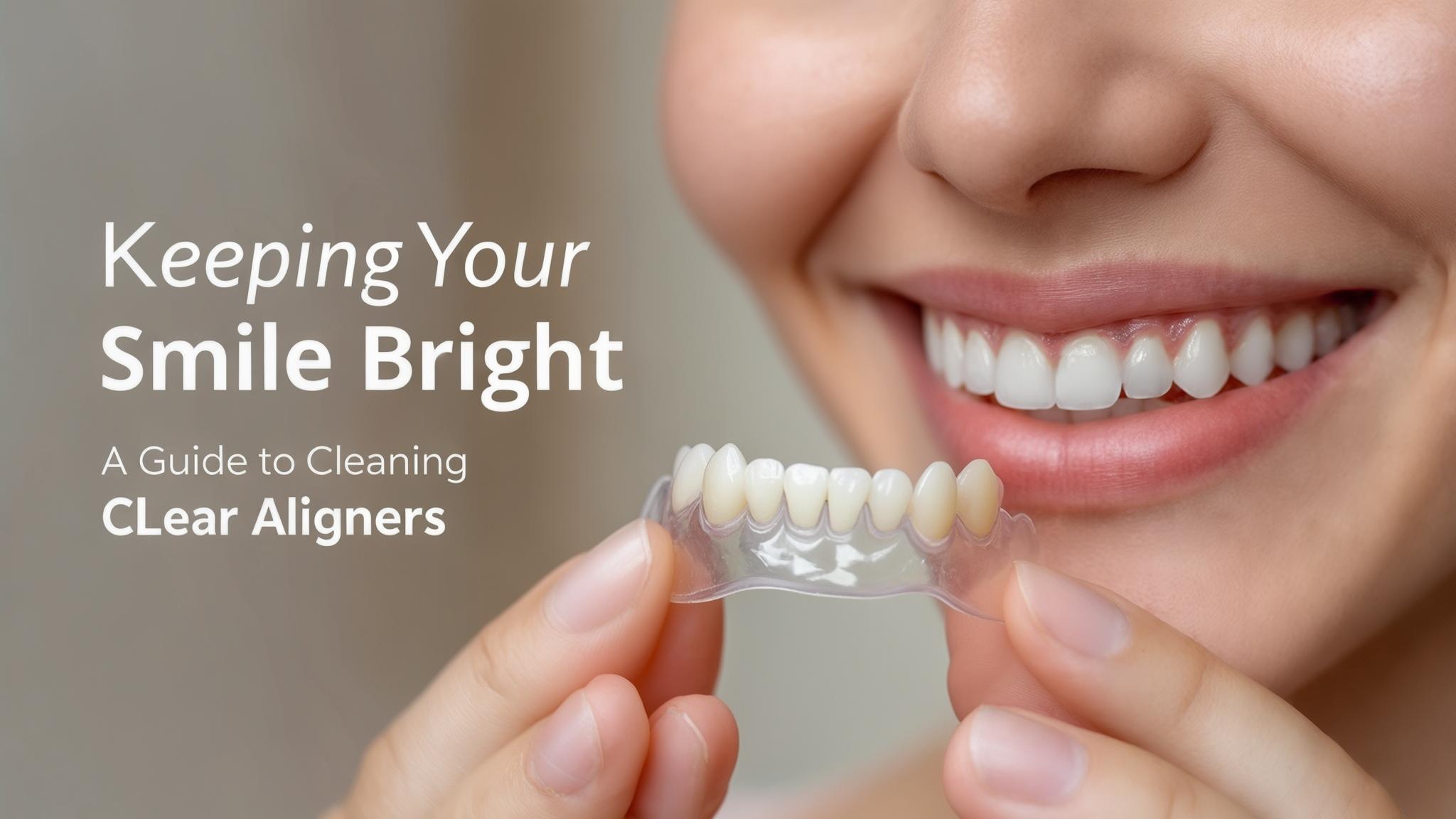Understanding Clear Aligners
Clear aligners are a popular orthodontic treatment that offers a discreet way to straighten teeth. Unlike traditional braces, aligners are transparent, removable trays that fit snugly over your teeth. They work by applying gentle pressure to shift your teeth into the desired position over time.
There are several well-known brands of clear aligners, including Invisalign, ClearCorrect, and SmileDirectClub. Each brand offers a slightly different product, but they all function on the same basic principle: a series of custom-made aligners gradually moves your teeth.
Typically, patients wear each set of aligners for about two weeks before switching to the next set in the series. Consistency is key; wearing your aligners for 20-22 hours a day ensures the best results.
Importance of Cleaning Aligners
Cleaning your aligners is crucial for several reasons. Plaque buildup can occur just as it does on your teeth, leading to potential decay or gum issues. Bad odors are another concern if aligners are not cleaned regularly, as bacteria can thrive in the moist environment.
Moreover, cleaning reduces bacterial growth, which is essential for maintaining oral health. Lastly, keeping your aligners clean preserves their clarity and ensures they remain as invisible as possible, maintaining their effectiveness.
Best Practices for Cleaning Aligners
Daily Cleaning Routine
-
Rinse with Lukewarm Water: Always rinse your aligners with lukewarm water when you remove them. Hot water can warp the plastic, while cold water may not effectively remove debris.
-
Use a Soft Toothbrush: Gently brush your aligners with a soft toothbrush. Avoid using toothpaste, as it can be abrasive and scratch the aligners.
-
Mild Soap if Necessary: If needed, use a mild, unscented soap to clean your aligners. This can help remove stubborn buildup without damaging the material.
Deep Cleaning Methods
-
Cleaning Tablets or Solutions: Consider using specialized cleaning tablets designed for aligners. These effervescent tablets dissolve in water and help to disinfect and deodorize your aligners.
-
Water and Vinegar Soak: Soak your aligners in a mixture of equal parts water and white vinegar for about 15-30 minutes. This natural method helps to break down plaque and bacteria.
-
Baking Soda Alternative: Create a paste with baking soda and water to gently scrub your aligners. Baking soda is a mild abrasive and can help remove stains and odors.
Avoiding Harmful Practices
-
No Hot Water: Never use hot water to clean your aligners, as it can distort their shape.
-
Avoid Abrasive Cleaners: Steer clear of abrasive cleaners and toothpaste that can scratch the aligners.
-
Ventilate Storage: Do not leave aligners in a closed container without ventilation, as this can encourage bacterial growth.
Additional Tips for Maintaining Aligners
- Proper Storage: Store your aligners in their case when not in use to protect them from damage and contamination.
- Avoid Strong Odors: Keep aligners away from strong-smelling substances, which can be absorbed by the plastic.
- Regular Check-Ups: Visit your orthodontist regularly to ensure your aligners are in good condition and your treatment is on track.
Common Mistakes to Avoid
- Neglecting Cleaning: Ensure you clean your aligners regularly to prevent buildup and odors.
- Harsh Chemicals: Avoid using harsh chemicals or abrasive materials that can damage the aligners.
- Oral Hygiene: Maintain good oral hygiene by brushing and flossing regularly while wearing aligners.
Conclusion
Cleaning your aligners is a vital part of your orthodontic journey. By following these best practices, you can ensure that your aligners remain effective and your smile stays healthy and bright. Remember, maintaining good hygiene is key to achieving the best results from your orthodontic treatment.
References
For more information on aligner care and oral hygiene, consider exploring resources from the American Association of Orthodontists and other reputable dental organizations.

